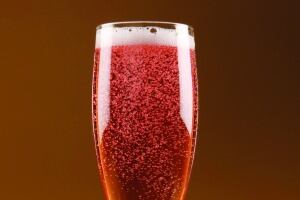“There is no doubt that over recent years, the experience and treats have become central to on-trade visits. Having reduced how frequently we go out, we have instead opted for a little bit of luxury every now and again,” says Rachel Perryman, CGA Strategy’s director of client services.
This development, coined ‘weekend millionaires’, refers to the fact that people are going out less, but treating themselves to better drinks when they do. Rather than going out all the time and drinking something average, they’re picking their occasions and are more interested in quality over quantity.
“Consumers may be going out less, but when they do they are willing to celebrate that occasion more through the food and drink they consume,” says Nick Gillett, managing director of Mangrove, the spirits division of the Coe Group. According to Gillett, a range of luxury spirits and drinks not only offers consumers this opportunity but also provides licensees with increased GP and cash margins.
“This needs to be accompanied by a good service experience, but if an outlet doesn’t offer this range of products not only does it miss out on the margin opportunity, the consumer will also form an opinion about the rest of the offering.”
Drinks menus have also begun to slim down to reflect a more ‘select’ offering, rather than one crowded with every drink under the sun. People visiting pubs have started to revel in the limited choice, especially when they know that what is stocked is exceptionally good. The old adage that less is more emphasises that simplicity is better than throwing everything at the wall and hoping something will stick. It’s the idea that creating something premium is not always about addition, but removal. Gaudiness and bling don’t make the cut and, as such, we’re seeing more James Bond-style drinks than the Mr T variety.

“Stocking luxury spirits allows you to offer only the highest quality of alcohol to your audience. Through serving only the very best spirits, establishments will garner a reputation for using high-quality ingredients, resulting in a unique taste experience, encouraging customer loyalty,” says Beluga UK brand ambassador Robert Zajaczkowski. Beluga Vodka is the flagship product of the Synergy Group. Currently, Beluga Vodka has a dominant share of the vodka market in Russia, and is represented in 56 countries across the globe, with exports increasing year on year by approximately 30%.
“Beluga Noble is best served neat and chilled from the fridge, allowing the characteristics of the vodka to be expressed. To honour the classics, Beluga boasts a vodka martini with a twist, incorporating pink peppercorns, peach and/or grapefruit bitters,” says Zajaczkowski.
“Consumers are becoming more diverse in their drinks choices and always want to try new ones, while growing increasingly careful about where they spend their money,” agrees Auchentoshan brand manager Nick Barker.
“The consumer is happy to spend a little bit more on quality spirit brands over others. As they’re more careful about their spending habits, choosing luxury high-end expressions, such as Auchentoshan Three Wood, ensures quality and money well spent. Consumers are extremely brand-conscious and loyal, so licensees stocking premium whiskies they can rely on is important and can help with customer retention.”
Maxxium UK is one of the leading distributors of premium luxury spirits, including single-malt whiskies The Macallan, Highland Park, Laphroaig, Ardmore and The Glenrothes; premium Scotch whisky blends including The Famous Grouse, The Black Grouse and The Naked Grouse; Jim Beam and Maker’s Mark Bourbons; and Courvoisier Cognac.
“The Macallan’s high-end collaborations with artist Sir Peter Blake, crystal designer Lalique, and photographers Rankin [John Rankin Waddell], Annie Leibovitz and,
most recently, Elliott Erwitt cements its luxury positioning within the premium spirits category,” says Jim Grierson, Maxxium UK on-trade sales director.
But it’s not just across brown spirits that the luxury trend is taking hold. According to CGA Strategy, more pubs and bars are embracing premium pours where their standard serve used to suffice, and luxury gins and vodkas are leading the way.
“As premium brands become customary across the trade, we are seeing an evolution of premiumisation where high-end outlets are opting for premium brands as house pours. In the past year we have seen a 40% increase in the number of outlets choosing premium house vodkas, and as premiums become the entry price-point, super-premiums and luxury brands become the first trade-up, driving a 34% increase in luxury spirits. The result of this has been an explosion of the premium spirits market, a proliferation that has led 62,000 outlets to stock a premium gin,” says Perryman.

Ian Peart, on-trade channel director for spirits at Pernod Ricard UK, agrees that “stocking luxury spirits has a very clear monetary benefit for on-trade retailers as premium spirits are currently experiencing year-on-year growth in both volume (+7.7%) and value (+12%), in comparison to non-premium spirits, which are demonstrating a mixed performance (a decline in volume of -2% and a slight rise in value of +3%)”.
Peart adds: “In the on-trade, premium spirits represent 42% of market value, and within London this is 50%.” This means that “half of every pound spent is on a premium spirit”.
While there is a significant opportunity for licensees to drive profit margins by stocking a range of luxury spirits, Peart says: “It is not enough just to have the range in place; it is also important for the on-trade to know their audience and make sure barstaff know their luxury spirits, to really capitalise on this opportunity. If a bartender doesn’t understand the difference in taste profile between different spirits brands, then they won’t be able to make the case to a customer that it’s worth spending more money, and licensees will miss out on revenue as a result.”
Peart adds: “Research found that 30% of purchasing decisions are influenced by a recommendation and 50% of consumers who accepted an upsell claimed it was because staff appeared knowledgeable on that spirit. Knowledge is, therefore, absolutely key — bartenders should encourage consumers to experiment with new serves and recommend the perfect drink, linking it to the big-night-out occasion to create appeal.”
Pernod Ricard is addressing the premium opportunity with its Drinkologists training team (in 2013 it reached around 2,000 bars), which includes training on effective upselling. The programme aims to provide licensees with the expertise they need, which can be as simple as staff offering the choice of a premium brand by name, or the ‘house’ option when making cocktails, in order to drive premium spirits and therefore boost overall sales.
“As there is a trend towards rum and vodka cocktails — with 64% of consumers’ favourite cocktails based on rum and vodka — premium drinks can be made by tapping into these trends and using premium products, such as Havana Club, as a base,” says Peart, adding: “Licensees should also consider recreating classic cocktails, such as the Old Fashioned and El Presidente, using Havana Club Selección de Maestros in order to reach the ultra-premium category, while keeping the cocktails accessible.”
Grierson says: “By stocking premium spirits, consumer perception is then raised and it creates another opportunity for licensees to boost sales by trading up consumers within a range that they love. For example, Bourbon drinkers who love Jim Beam can then trade up to Jim Beam Devil’s Cut for a more premium Bourbon experience.”
But, adds Grierson, people still need to be informed. “Communication and education is key when letting customers know about the range of spirits available in a pub or bar. This can be accomplished with descriptors on menus, through a cocktail list made with premium spirits and naming luxury spirits
by brand, to showcase the range of quality.
“At every opportunity, when spirits are called for, it is worth pointing out there is now a wider choice,” agrees Peter Thornton, brand manager for Pusser’s Rum.
“There are also occasions such as family meals in the restaurant, special days like Mothers’ and Fathers’ Days, and publicans’ own special days for customers [for example, summer barbecues]. Customers need to be educated to the differences in the quality of spirits, and they are generally willing to try a brand with which they are not familiar.”
Euan Mitchell, managing director at Isle of Arran Distillers, adds: “A good time to encourage customers to trade up is on a birthday or celebration, as customers are likely to have a little more money to spend and will be looking to make the evening extra special. Guided tastings are another good way to introduce customers to your more premium range of spirits and can be sold as stand-alone events to appeal to a wider consumer base.”
Food is an alternative way to encourage consumers to trade up, highlights Grierson. “High-end food items should be paired with equal quality spirits, and as cocktails continue to grow in the on-trade the trend of food and cocktail pairing is becoming increasingly popular.”

He also points out how cocktails that use luxury spirits as a base can also offer great margins while really looking the part. “By using premium spirits in cocktails, licensees have the opportunity to encourage customers to trade up. Glassware, garnishes and presentation all play an integral role in creating an enticing drink to pique the curiosity of the customer and engage them with a luxury brand,” he adds.
Diageo’s luxury division, also known as the Reserve Collection, is a portfolio of spirits rich in heritage, craftsmanship and innovation, and includes: Johnnie Walker Blue Label, Johnnie Walker Platinum Label, and Johnnie Walker Gold Label Reserve blended Scotch whiskies, Cîroc Vodka, Ketel One Vodka, Zacapa Rum, Don Julio Tequila, and Tanqueray No. TEN Gin.
Diageo Reserve has doubled in net sales value since 2009 and is now worth approximately £1.2bn with a robust growth trajectory. Over the past few years, it has consistently posted double-digit growth across both developed and emerging markets, while accounting for a third of Diageo’s uplift.
According to its recent results, Diageo returned to growth in the six months to 31 December and reported a net sales increase of 1%. Andrew Cowan, country director at Diageo GB, says the company’s reserve brand portfolio was up 24%, driven by luxury vodka brand Cîroc and single-malt whisky Talisker, and had “performed strongly”, showing that luxury spirits remain in high demand due to the fact that everyone wants to indulge in experiencing the very best available.
People are starting to venture out again — slowly, but surely — with a hazy recollection of economic struggles. They’re meeting pals for the very best martinis or taking gin tasting classes. And they’re not all rich, in the sense of having great wealth.
However, they are adventurous and loyal to great drinking establishments. Most of them are happy to visit their local too, without worrying where to park the Ferrari.
